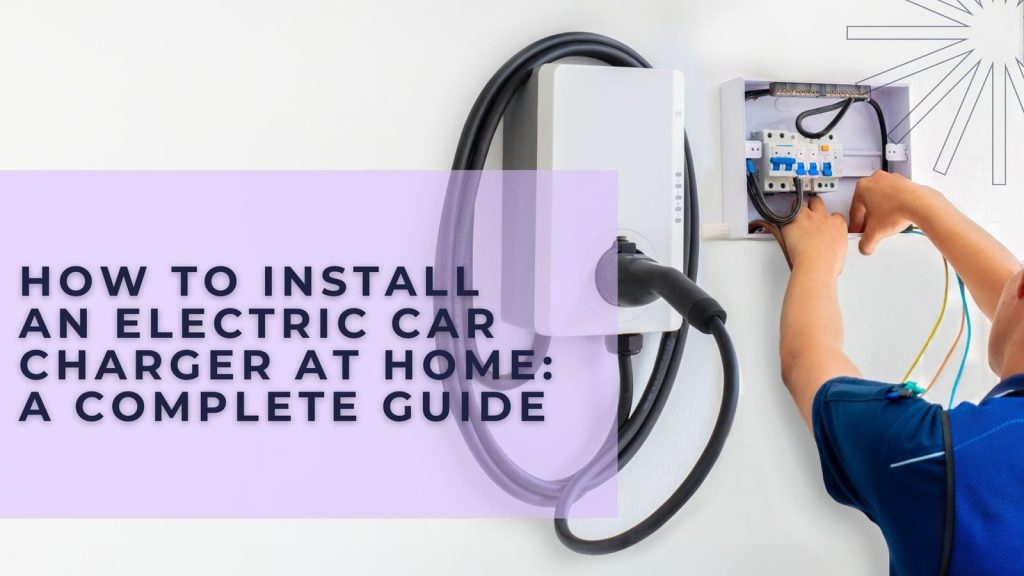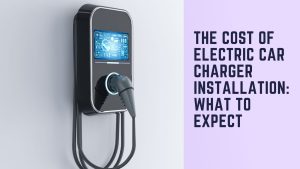With the gradual adoption of electric vehicles (EVs), many homeowners are looking forward to installing electric car chargers for the sake of convenience and cost reduction. The following guide will be of special use to people who are planning to do electric car charger installation for the first time.
What You Need to Know Before Installing an Electric Car Charger at Home
Before diving into the home EV charger installation process, there are several factors to consider:
Determine Your Charging Needs: The size of the battery in your car and your daily commute distance will determine the type of charger to use; it only makes sense to ensure that you have the right charger. For instance, if one has a daily drive of only a couple of miles, one may be able to get away with a Level 1. That said, if you’re looking for something that charges rapidly and in less time, then perhaps a Level 2 charger is what you need.
Check your home’s electrical capacity: Ideally, your home has to have the right wiring for the additional load of an EV charger to be installed. It is understood that some of the older homes will require an upgrade of their electrical panel before they can install a charger.
Choose the Right Location: A practical EV charging location is mainly within your compound in a garage or within short proximity to the garage. Ensure that the place you fix is near the charging port of the vehicle and easily rechargeable throughout the day.
Permits and Local Regulations: Depending on the locality, some may require a permit initially before the installation. Also, you should consult the local building codes and ordinances concerning electrical work or any other requirements for installing an electric car charger.
Types of Electric Car Chargers: Level 1, Level 2, and Level 3
There are three primary types of electric vehicle chargers, and understanding the differences between them will help you choose the best one for your home EV charger installation:
Level 1 Charger
- Connects to a standard 120-volt outlet similar to any appliance you might take from your kitchen.
- Slow charging: This means that your vehicle takes a long time to charge; sometimes it may take 12–24 hours in order to be fully charged.
- It suits those drivers who travel short distances or have ports where they can plug in the car for a number of hours.
Level 2 Charger
- Uses 240 volts, which is similar to that of a clothes dryer electric outlet.
- Charges are faster than the other types, taking normally between 4 and 6 hours for a full charge.
- This is the most popular scheme for home installations, mainly because of their moderate speed and price.
Level 3 charger (DC fast charger)
- Huge electrical energy is needed; typically utilized in commercial buildings.
- It can charge an EV in half an hour but is not great for home use because of its cost and electrical demands.
Level 2 charging system is the most appropriate for a majority of households since charging can be achieved without extensive rewiring and remodeling of the home.
Step-by-Step Guide to Installing an EV Charger at Home
Don’t know how to install EV charger? We got you!
Follow these steps to ensure a smooth and successful electric vehicle charger installation!
Evaluate Your Home’s Electrical System: This can be done with the help of a licensed electrician to survey your home’s circuitry to check whether it can manage the load of an EV charger.
Choose the Right Charger: Therefore, depending on your driving needs and the advice of your electrician, choose either a Level 1 or Level 2 charger. Check to make sure the kind of charger you choose is one that will be compatible with your EV.
Obtain Necessary Permits: Please consult the local officials to know if there is a need for the permit for installation work. Often enough, electrical work requires someone with a license to do the work to provide a level of safety required for the area.
Install the Charger: After deciding on the charger and obtaining the right permits, an electrician will put in a new circuit for the charger and erect the charger itself, if necessary. If you are going for a Level 2 charger, then you are going to need the installation of a 240-volt outlet as well.
Test the System: When done with installation, the electrician will run some diagnostics that are meant to confirm the right function of the system and your EV charging at the expected rate.
Electrical Requirements for Home EV Charger Installation
The most important standards or specifications relate to correct electrical measurements that dictate the safe and efficient implementation of home EV chargers. Here’s what you need to know:
Dedicated Circuit: EV chargers and more especially Level 2 charging systems need to have a separate electricity circuit, as using your existing ones may prove to be inadequate. The amount of amperage of the circuits depends on the charger that is used, and this is usually between 20 and 60 amperes.
Electrical Panel Capacity: Your home will need space for the charger, and its requirements need to be within the capacity of your home’s electrical panel.
Voltage Requirements: Level 1 charges use normal 120-volt plugs, whereas level 2 chargers use 240-volt plugs. Getting a 240-volt outlet will need an electrician since the job involves a high level of expertise.
Safety Tips for Installing an Electric Car Charger
There are a number of considerations to be taken into account when installing an EV charger. Here are some important safety tips:
Hire a Licensed Electrician: Working with electricity is a delicate affair in the sense that if not well done, then very dangerous consequences may ensue. This means that it is always advisable to engage a licensed electrician for any EV charger installation to check the safety codes of the area.
Install a Ground Fault Circuit Interrupter (GFCI): A GFCI is intended to act as a safety device that will help reduce the flow of electric current to a level that does not cause electrical shock.
Follow Manufacturer Instructions: It must be remembered that when using an EV charger, one has to stick to the installation and operating guidelines given by the manufacturer.
Routine Maintenance: Chargers should also be checked frequently for any signs of wear, fraying of wire, or any damages. This way the investor will have to seek the services of a professional for repair or even replacement in cases of damage.
By so doing, you will have a safe and efficient charger installation for your electric vehicle to ensure that your car’s battery is always charged.






